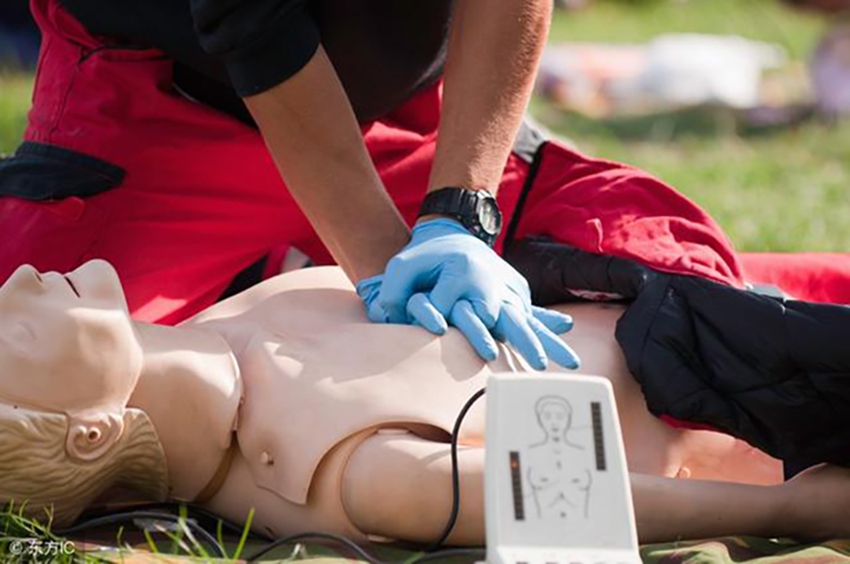Increase the popularity of cardiopulmonary resuscitation and enhance the first aid capability of the whole population
First. Importance of cardiopulmonary resuscitation techniques
Cardiopulmonary resuscitation (CPR) is an important first aid technique invented by anesthesiologists. If a cardiac arrest patient is not resuscitated, irreversible damage to the brain and other vital organs and tissues will occur in 4-6 minutes. If correct and effective resuscitation measures are taken in a timely manner, the patient's life may be saved and he/she may recover. Therefore, cardiopulmonary resuscitation (CPR) after cardiac arrest must be performed immediately at the scene. In hospitals, CPR is mainly performed by anesthesiologists and emergency physicians, but 80% of cardiac arrests occur outside of hospitals, and the first witnesses are family members, friends, colleagues or strangers around the patient. In the event of an emergency, the ability to perform CPR correctly can save a life, so popularizing CPR among the public is of great significance to saving lives and promoting the construction of a healthy China.
Second. the current popularization of CPR in China
According to statistics, on average, one person dies of sudden cardiac death every minute in China. Most people think that the first choice is to call 120 when encountering a patient with sudden cardiac arrest; in fact, when the ambulance arrives, the patient has basically lost the hope of being saved, and even if he or she is saved, there will be all kinds of serious after-effects. China's adult CPR prevalence rate of less than 1%, while the United States is 60%. The level of medical personnel's knowledge and operation of CPR is also uneven. Therefore, there is an urgent need to raise the public's awareness of the importance of CPR and popularize the scientific theory and techniques of CPR. In recent years, health and planning departments at all levels, medical institutions, the Red Cross, first aid agencies and social organizations have popularized this technique in different ways. For example, the Chinese Society of Cardiothoracic and Vascular Anesthesiology initiated the “Connecting Hearts and Hands, Lighting Up Lives” CPR popularization and training public welfare activity in 2015, relying on the Society's strong medical resources and bringing together the love and power of the whole society, to popularize this first aid technique among the public nationwide. In more than two years, the training has been spread all over the government agencies, enterprises and public institutions, armed police forces, schools at all levels, communities, medical institutions, emergency rescue organizations and crowded places, with a total of more than 100,000 people trained, and at the same time, a team of high-quality CPR training instructors has been set up, and a standardized training system and operation norms have been established. At present, the number of people who can be popularized in China is 1 billion (people aged 15-65). At the same time, the quality of all kinds of training varies, and there is a lack of uniformity and standardization, resulting in some training not achieving the expected results. Therefore, the current situation in China is that the popularization rate is relatively low, the task of popularization is still very heavy, and the training work also needs to be unified and standardized.
Third. Suggestions for improving the popularization rate of cardiopulmonary resuscitation
First, establish a long-term mechanism for CPR popularization and training, and institutionalize this work. Change the current situation of voluntary learning, from the national level, unified requirements, such as in the driver's license, required to learn CPR technology, in large, medium and small schools to establish CPR training courses, as one of the contents of student health and emergency education.
Secondly, a unified and standardized training system should be established to improve the quality of training. To change the current situation in which each department carries out its own training, the state commissions medical social and civil organizations to develop standardized training materials, establish a training management system, form a pool of instructors, select outstanding grounded professional physicians to serve as instructors, establish a scientific assessment system, and set up fixed training classrooms, etc., which can also unite the popularization of this technique with the enhancement of the citizens' ability to rescue people in emergencies and integrate and promote each other, so as to enhance first aid for the whole population. It is also possible to combine the popularization of this technology with the enhancement of citizens' emergency rescue capabilities in a way that is mutually integrated and mutually reinforcing, so as to improve the first aid capabilities of all people.
Thirdly, we should further promote the legislation on exemption from liability for first aid, so as to protect the rescuers from the legal level. At present, some regions have already introduced regulations on exemption from liability for first aid to solve the problem of “not daring to save”, but no relevant laws and regulations have yet been established at the national level. It is recommended to promote the legislation of first aid exemption from liability at the national level, and at the same time increase the publicity of laws and regulations and the interpretation of specific issues, so that more people know the scope and content of first aid exemption from liability, and more people dare to lend a helping hand to cardiac arrest patients when they encounter them.
Strengthening the provision of defibrillators in buildings and public places to improve the effectiveness of resuscitation. Defibrillator (AED) is an important equipment used in pre-hospital cardiopulmonary resuscitation. In the process of implementing cardiopulmonary resuscitation, the use of defibrillator can greatly improve the resuscitation effect. At present, the rate of defibrillators in China is relatively low, and it is difficult to find a defibrillator in the vicinity in case of an emergency. It is recommended to further standardize and promote the implementation of the provision of defibrillators in more buildings and crowded places across the country, to increase the rate of provision, and to publicize and guide the public to understand the provision of defibrillators, so that they can find defibrillators the fastest and use them to improve the effect of resuscitation during cardiopulmonary resuscitation.
Fifth, to enhance the public's sense of social responsibility and promote socialist core values. Through the popularization of CPR technology and the promotion of related work, not only training technology, but also to disseminate the concept of social responsibility, so that more people can consciously learn this first aid technology, encounter cardiac arrest patients can be active in the rescue, reflecting the degree of civilization of a country and the public's sense of social responsibility, a small incision, a big vision, to promote the social harmony of the progress of the small, so that the country and the people are more powerful.



